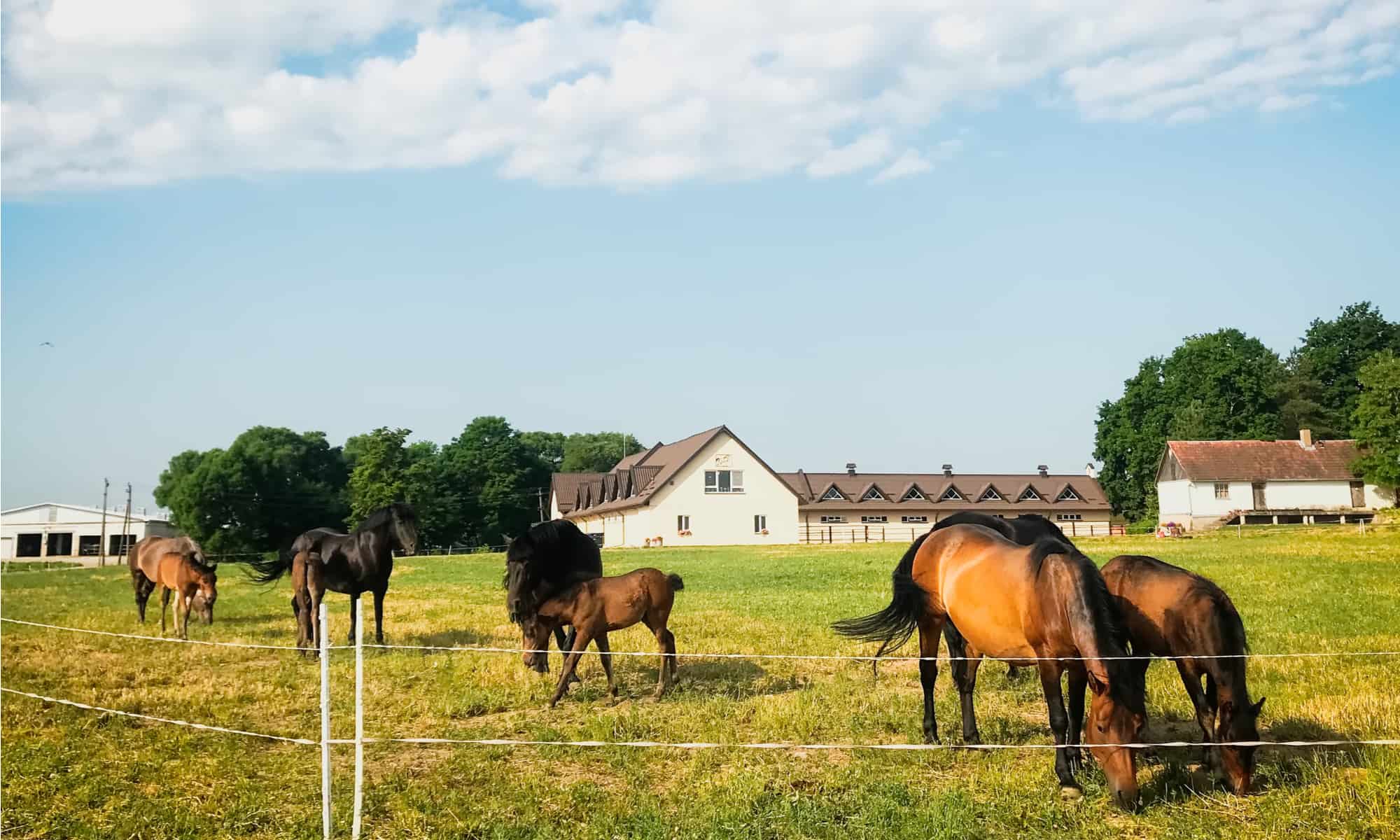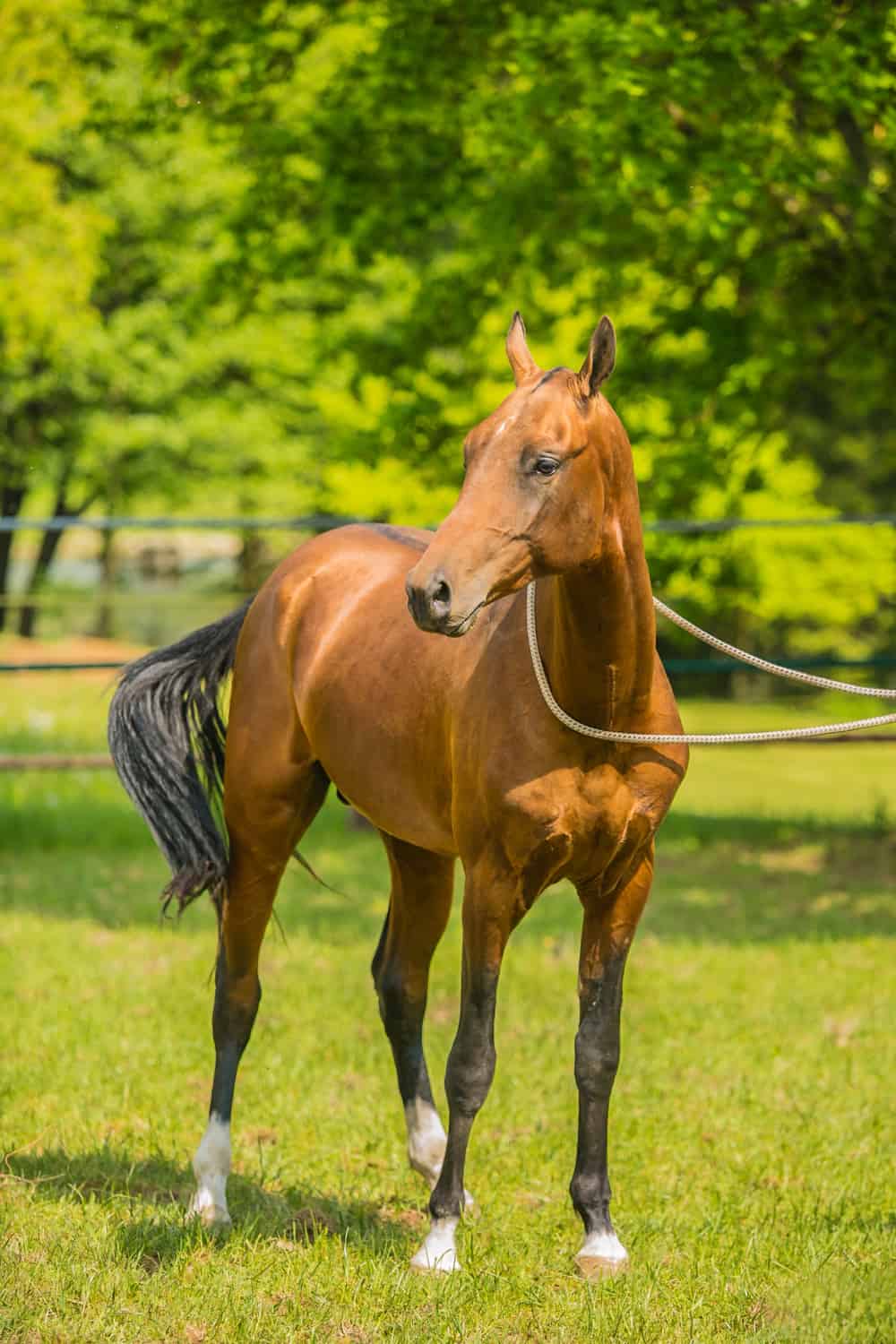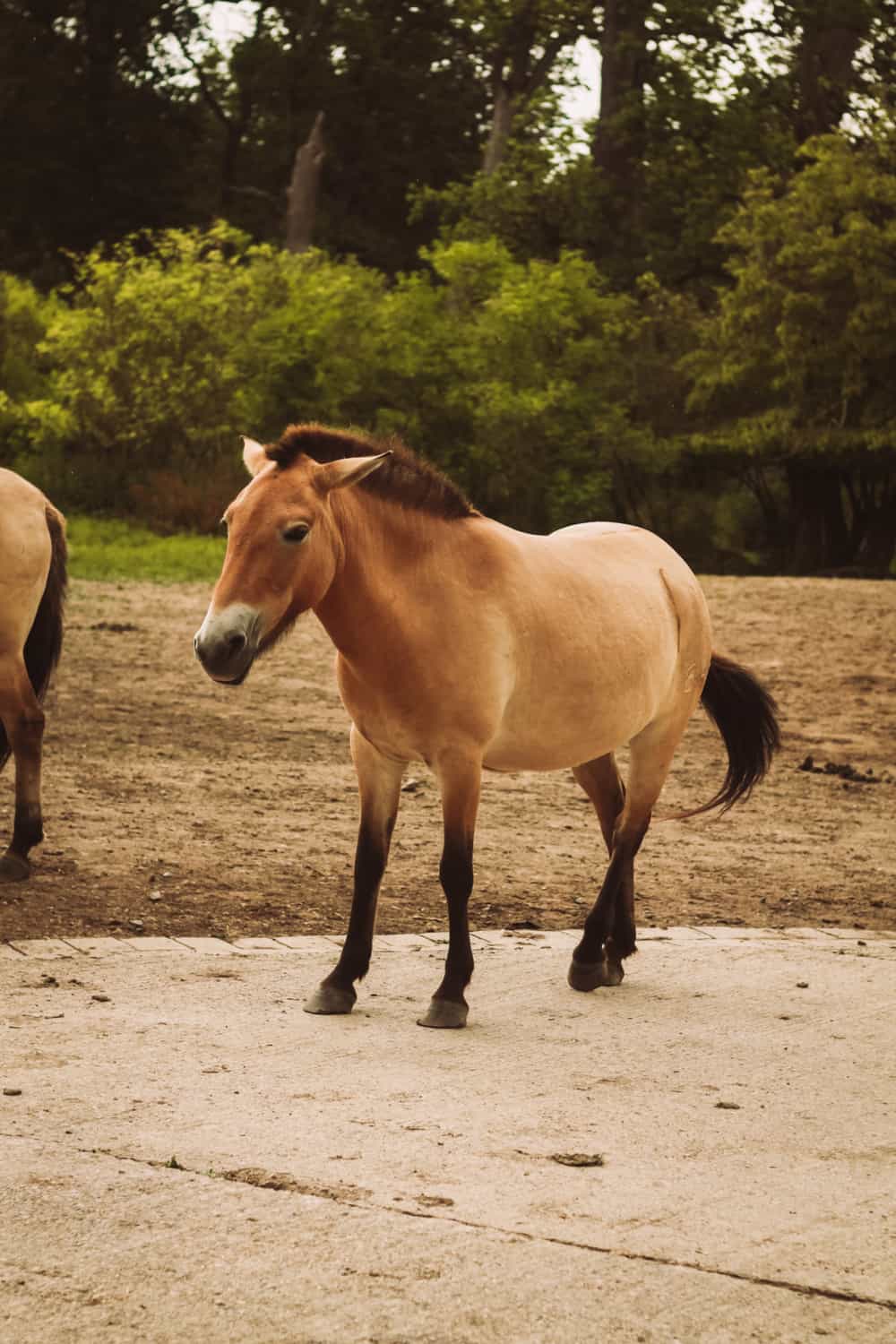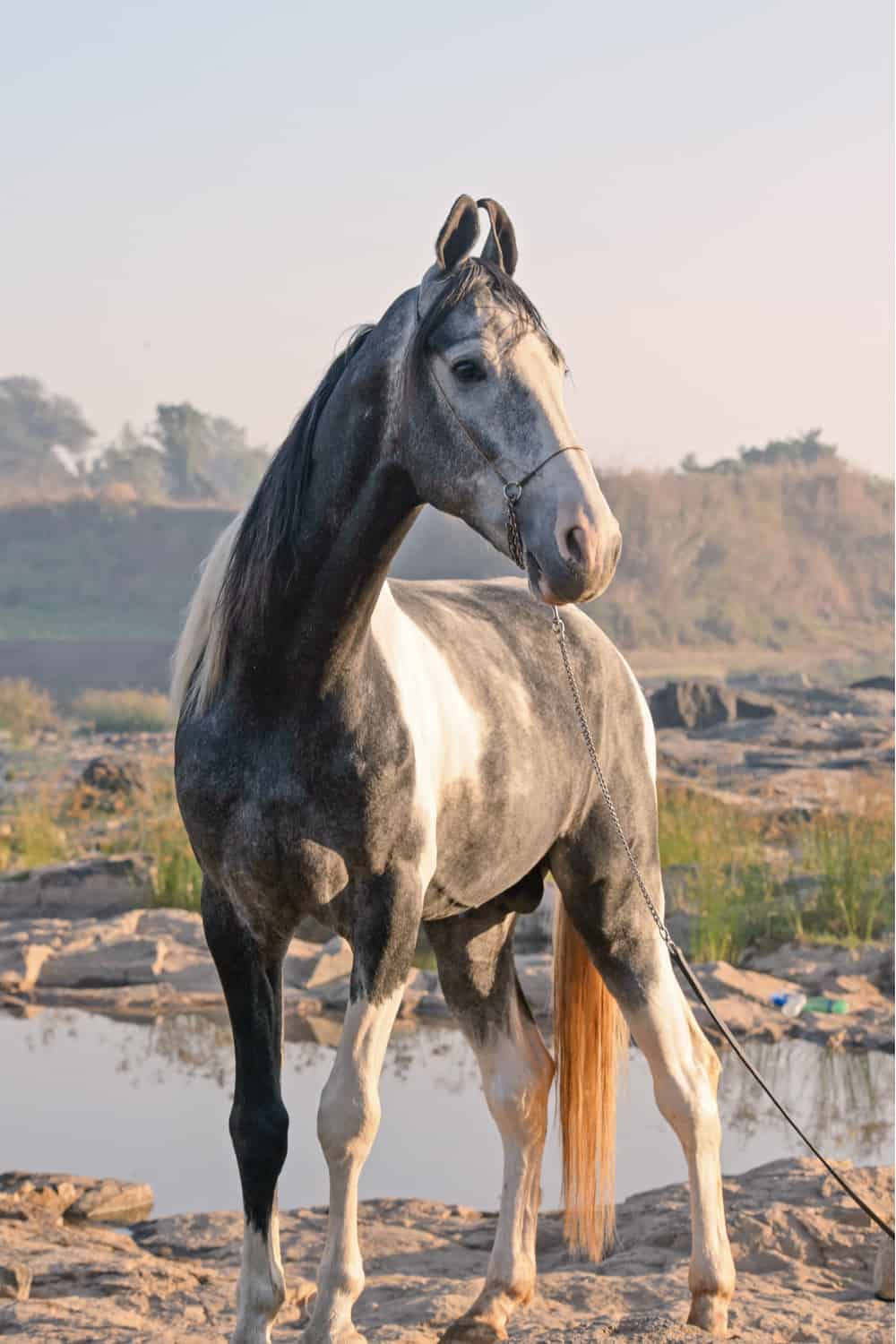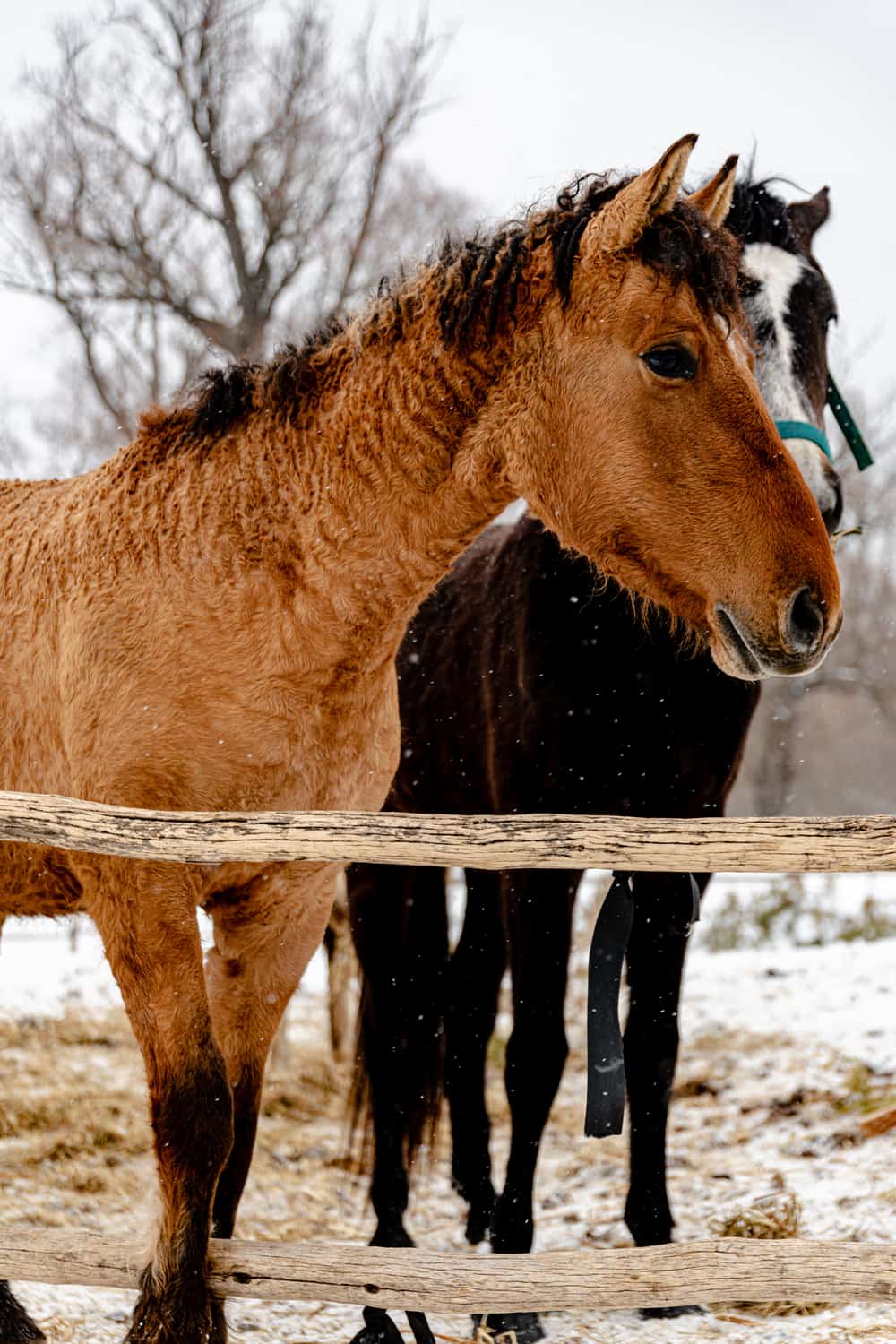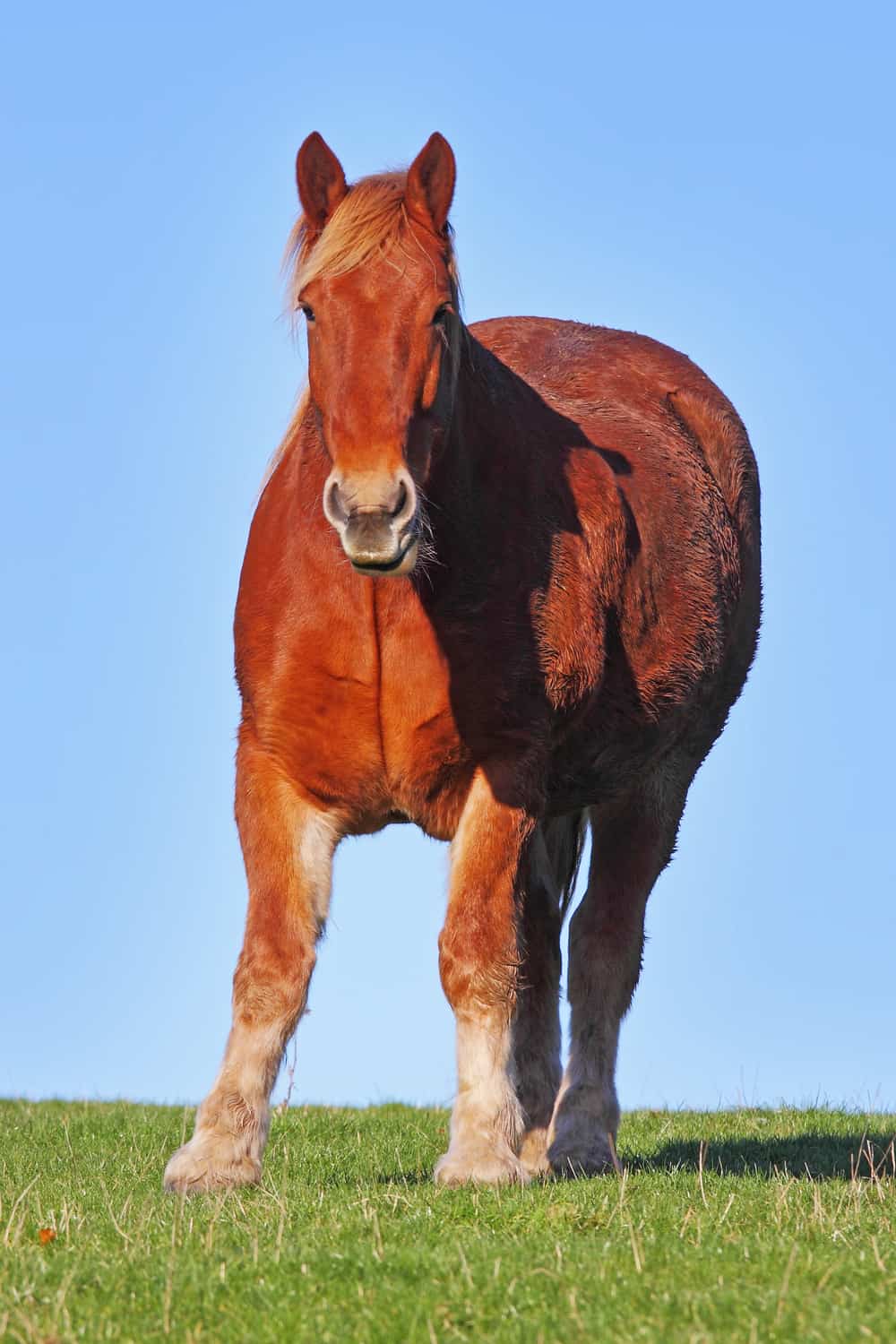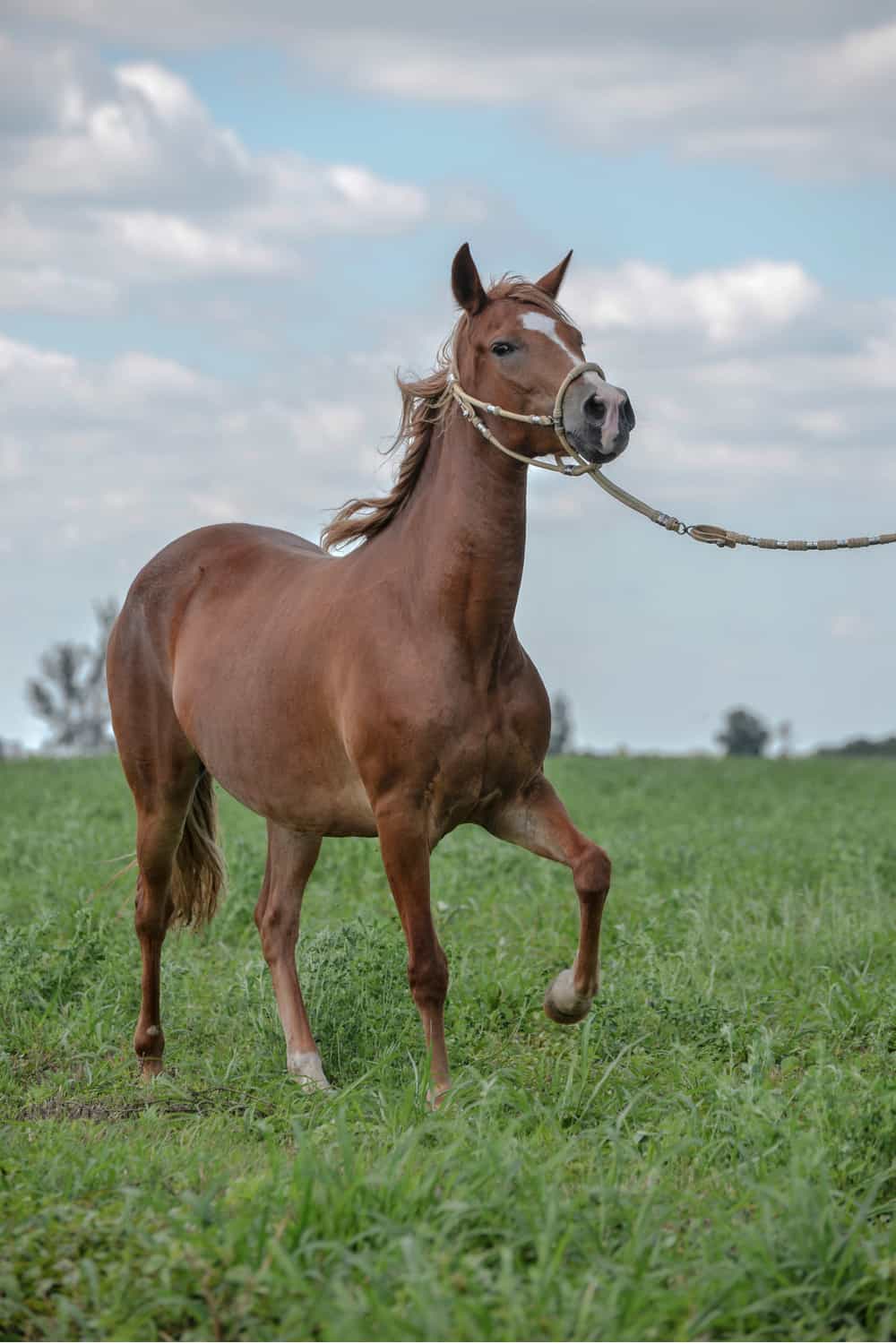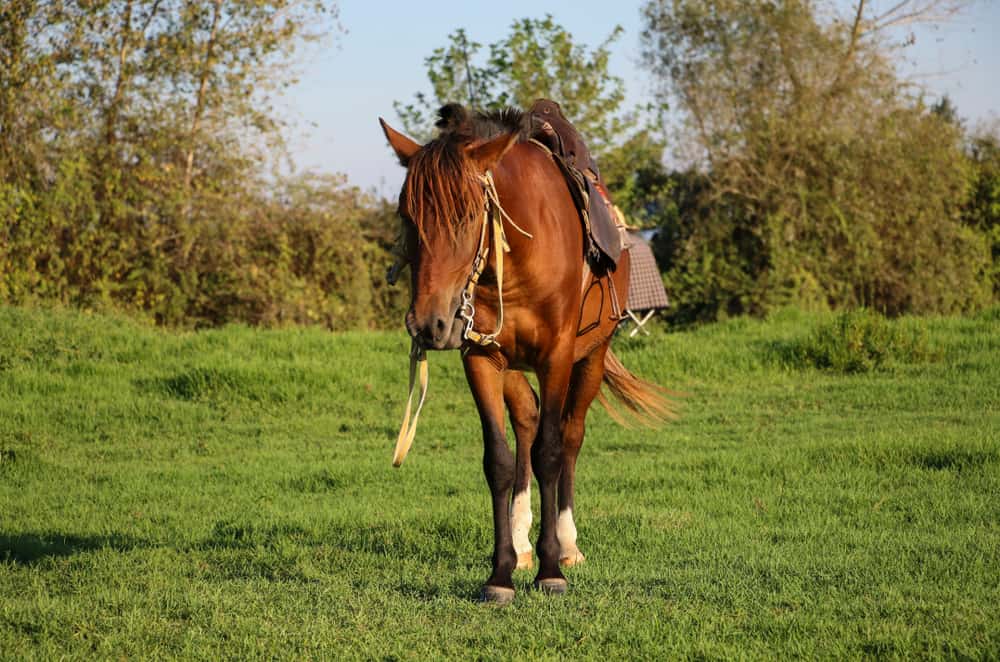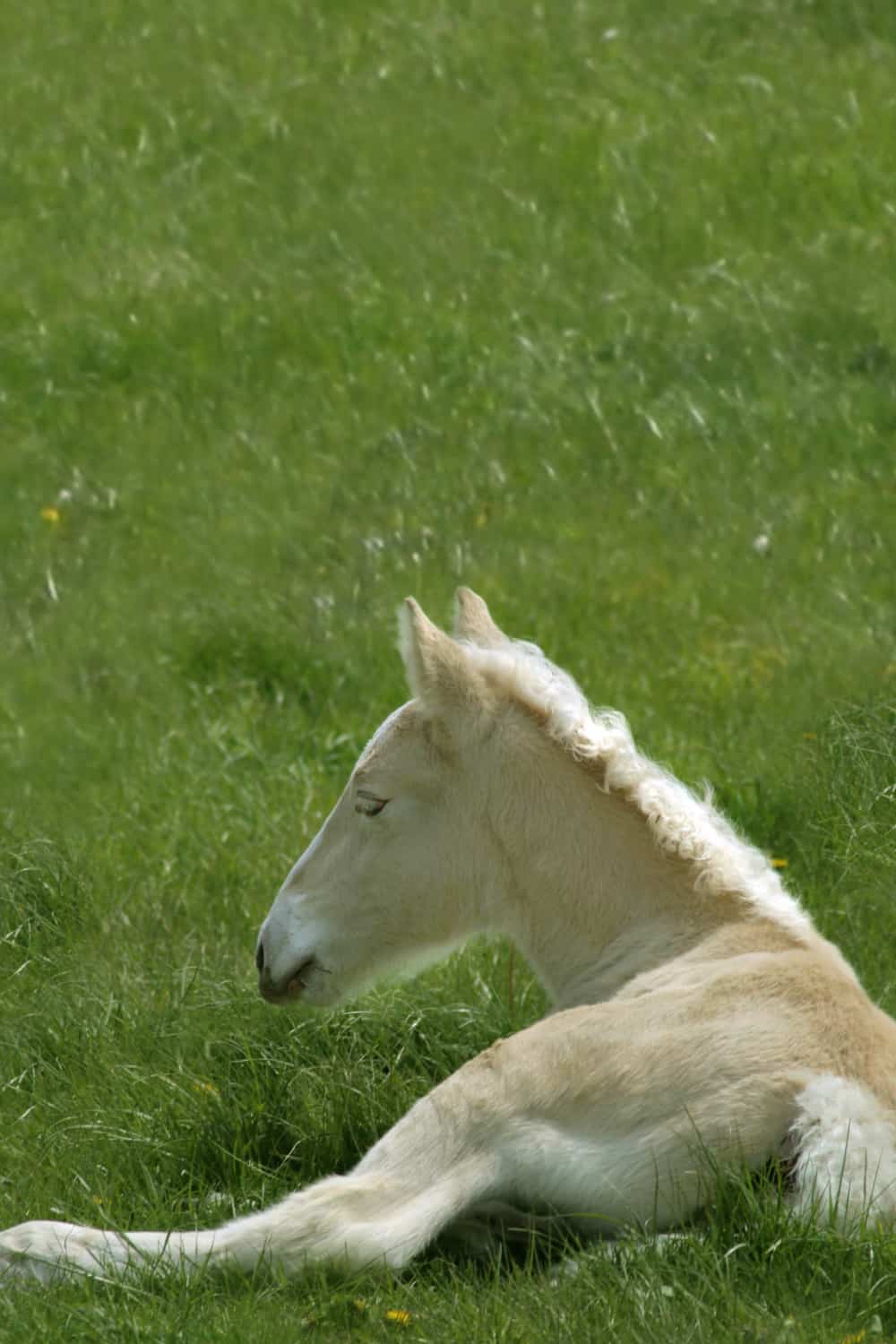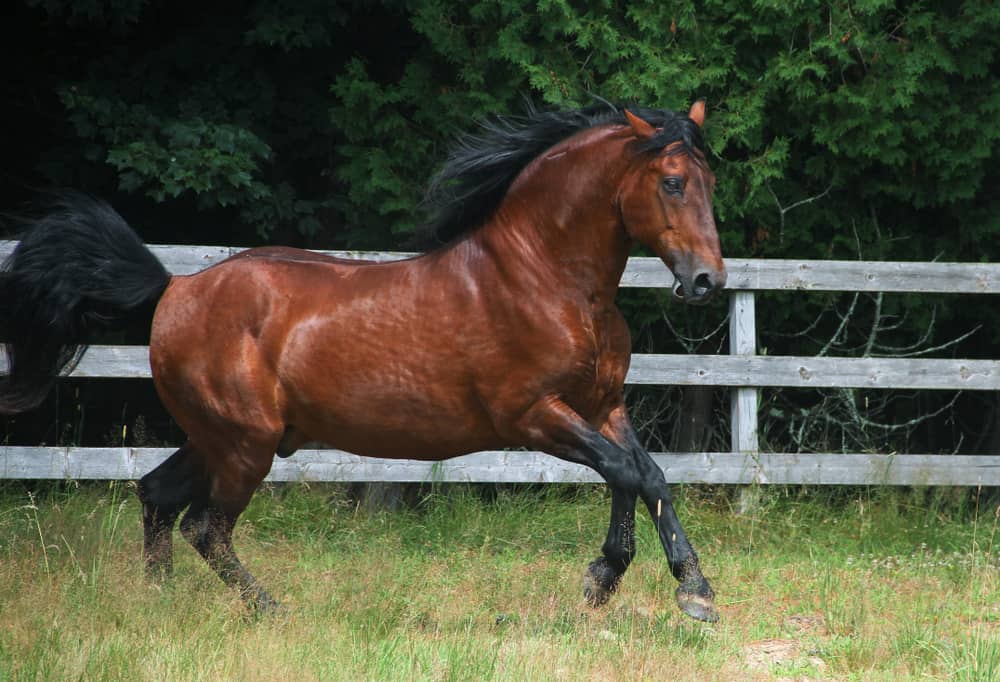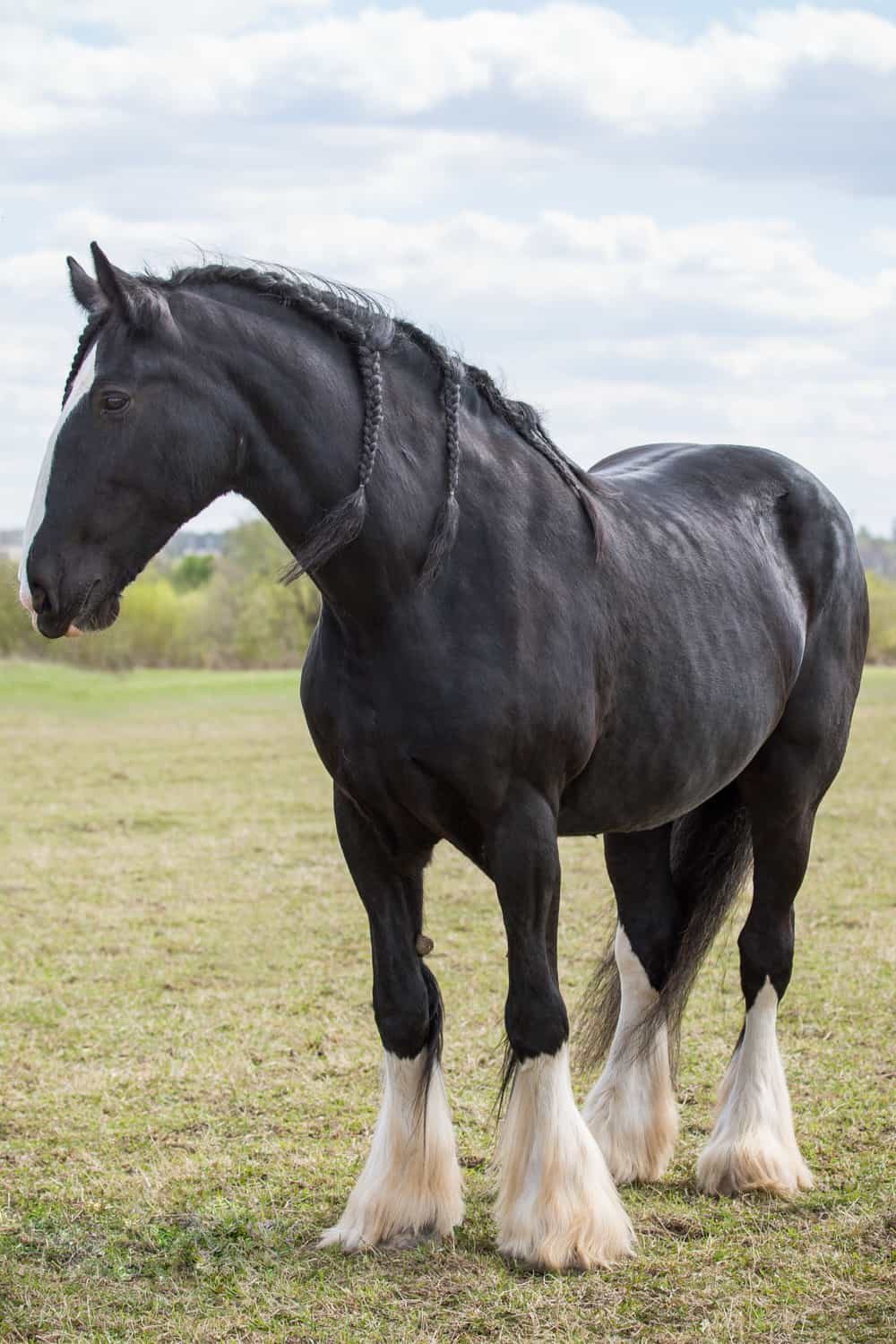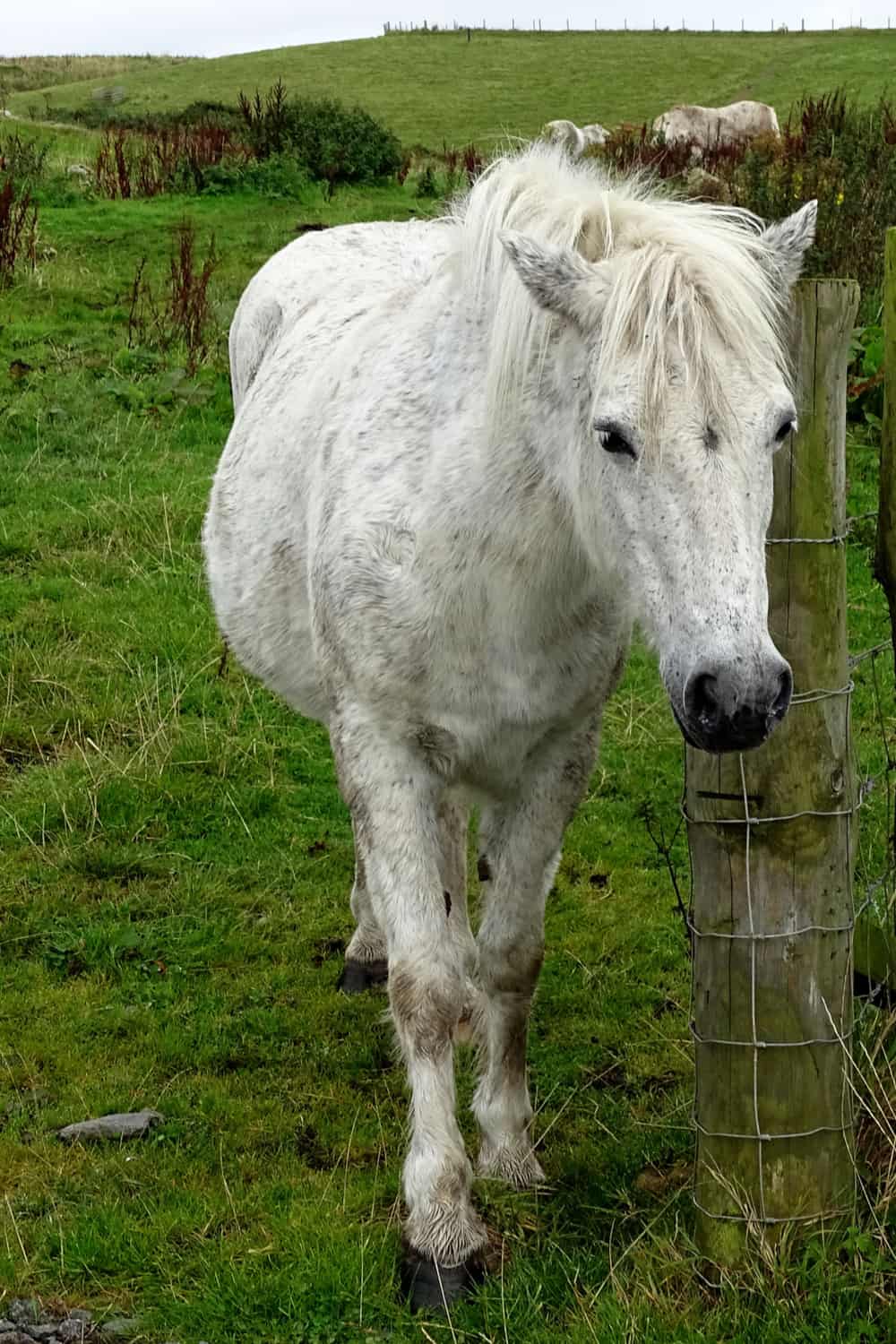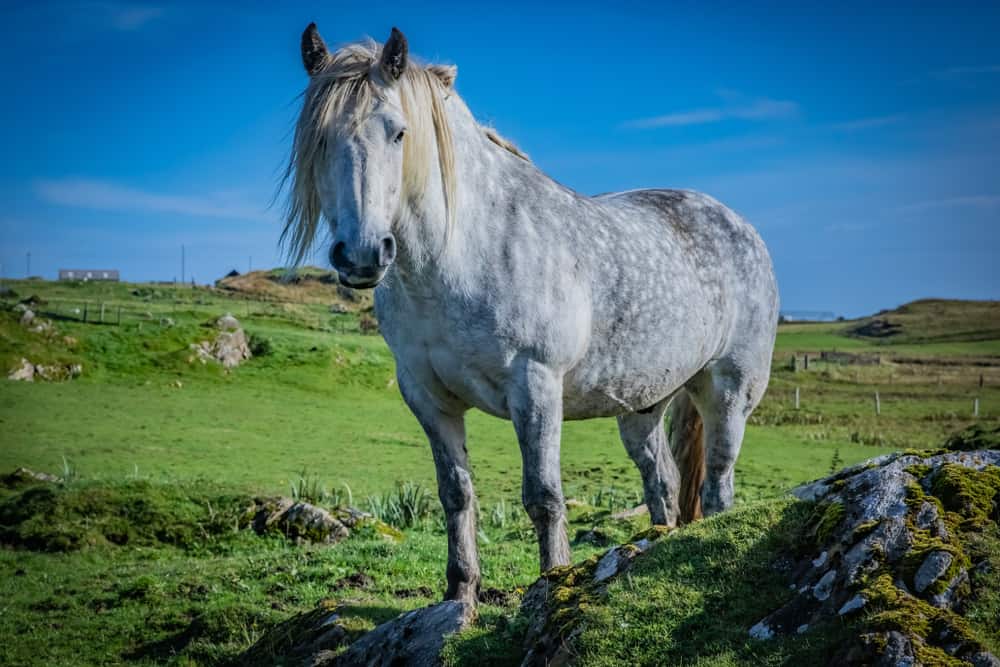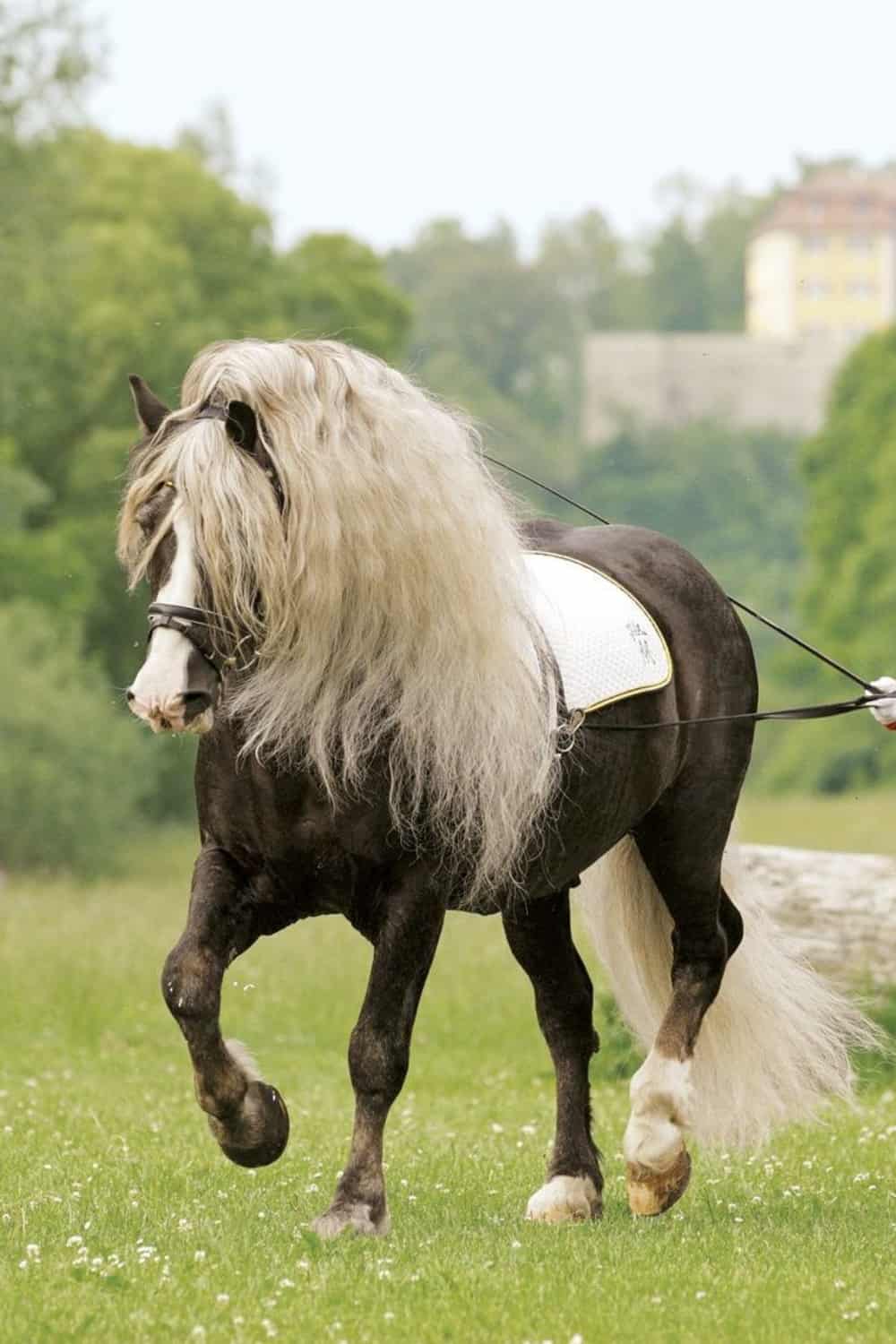We’ve all heard of beautiful Arabian or Thoroughbred horses. But if you love all equine creatures, you might be interested to learn about some less well-known breeds.
Our list of 14 rare breeds includes horses with golden coats and curly ears! And there are many other uncommon horses to get to know.
So sit back, and prepare to find out more about some truly fascinating creatures …
1. Akhal-Teke
The Akhal-Teke is the national horse of Turkmenistan, where it is known as the “golden horse”. The name comes from the beautiful metallic sheen of its coat, which really does glow golden in sunlight.
The color comes from the “cream” gene, but you can also find Akhal-Tekes that are black, chestnut and bay. Some believe that the sheen of their coats helped to camouflage them in the Turkmen desert.
The origins of the breed are shrouded in mystery. Some believe it to be descended from another of the region’s breeds, the Turkoman.
Today’s Akhal-Tekes stand between 14.2 and 16 hands. They have long ears and relatively thin manes and tails. They’re tough horses, able to survive on smaller amounts of fodder and water.
They were first used by the tribal people of the Turkmen desert for raids. Today, you’re more likely to see them in the show jumping ring, where they’re known for their elegance and grace.
2. Przewalski’s
Przewalksi’s horse also goes by other names – the Mongolian Wild Horse, the takhi and the Dzungarian. Its best known name comes from the naturalist who first documented it in the wild, a Polish-Russian colonel called Nikolaj Przewalski.
It’s one of the rarest of breeds, having once become extinct in the wild. Fortunately, it has since been reintroduced to several habitats in Mongolia, eastern Europe and central Asia. Today, some consider it the only truly wild horse in the world, as it’s believed to have no domesticated ancestors.
As such, its genetic make-up is quite different from modern domesticated horses, with 33 pairs of chromosomes rather than 32. It has a stocky body and short legs, which sometimes have faint stripes. It stands between 12 and 14 hands, and weighs roughly 300 kilos.
Przewalski’s horses live in family groups, which sometimes join together to form herds. Stallions and mares form couples and often remain together for many years.
3. Marwari
The Marwari originates from India, taking its name from the Marwar region of Rajasthan. In the past, it was a favored war horse, noted for its loyalty and courage on the battlefield. And its ambling gait also made it a comfortable mount for Indian noblewomen.
You’ll be able to tell a Marwari horse by its distinctive ears. They curve inwards and can rotate a full 180 degrees, so that they touch at the tips. Male horses stand on average 14.3 hands, while females average 13.3.
Most horses are dark or light bay, and some have the same metallic sheen as the Akhal-Teke. But gray horses are considered lucky, and it’s those that fetch the highest prices in India. Horses with a blaze and white socks are also seen as auspicious.
And if you want a really lucky horse, look out for hair whorls too. These are patches of hair growing in the opposite direction to the rest of the coat. Long whorls running down the necks of Marwaris are considered to bring good fortune, whilst whorls on the fetlocks bring victory!
4. Curly
Another distinctive looking horse, the Curly carries the gene for a curly coat. But don’t be fooled – not all Curlies have curls! The gene is recessive, so even purebred horses can have a smooth coat.
Most Curlies are chestnut, but the breed can also be found in pretty much every equine color and pattern. What they all have in common is that their coat is hypoallergenic! So if you’ve found yourself sneezing around horses in the past, the Curly could be the answer to your horse-riding dreams.
Curlies range from miniature to draft horses, but most usually stand between 14 and 16 hands. They have a reliable, sociable temperament and are noted for their excellent stamina.
Their ancestry is the subject of hot debate, and is reflected in a range of variations on their names. You may hear them called Bashkir Curlies, North American Curlies and American Bashkir Curlies.
5. Suffolk Punch
The Suffolk Punch was once found all over England, working on farms. They were also used at times of war for pulling artillery, and for drawing non-motorised vans and buses. But as agriculture increasingly employed machinery, their numbers declined. Today they are classed as an endangered species.
The Suffolk Punch is a close relative of the British Fell and Dales ponies, and of the Haflinger, a European horse. They are large, muscular horses, standing between 16.1 and 17.2 hands, and weighing anything between 2,000 and 2,200 pounds.
They are always chestnut, though breed specialists have developed a specific color palette to describe their coats. This includes red, dull dark, dark liver and bright. They are energetic and hard-working horses, and are today used in draft work, forestry and even advertising.
6. Peruvian Paso
Despite its name, the Peruvian Paso originated not in Peru but in Spain. It came to south America in the 16th century and has been bred there ever since.
They have a distinctive gait, with very little up and down bounce. That makes them an exceptionally comfortable horse to ride, perfect for longer journeys.
The neck of the Peruvian Paso is relatively short, and they have well defined legs and a broad, short back. They average a height of between 14 and 15 hands, and they’re found in a wide range of equine colors. They’re known as friendly, curious and calm animals.
Today, there are about 25,000 Peruvian Pasos across the world.
7. Caspian
The Caspian horse was believed to have been extinct for over 1,000 years. But in the 1960s, it was discovered alive and well living next to the Caspian Sea in Northern Iran. Today, the breed remains endangered, with around 1,400 Caspians registered around the world.
The Caspian was once the horse of choice for Persian monarchs, pulling the chariot of King Darius in lion hunts. It has a slim body, sloping shoulders and graceful neck. And although it is relatively small, it’s an excellent jumper.
Not surprisingly, Caspian horses are often used in show jumping and eventing. And they also make excellent mounts for children.
8. Canadian
The Canadian horse is a descendent of the light riding and draft horses which were brought to Canada in the 17th century. It was exported widely during the following hundred years, including for use on the battlefield. As a result, the breed almost became extinct, and exports were banned in the 19th century.
Fortunately, recent years have seen a number of new breeding programmes. While the population remains small, the future is looking brighter for the Canadian horse.
They have an average height of between 14 and 16.3 hands. Most are dark colors, like bay, brown and black. Their heads are short, their necks arched and graceful with wavy manes, and their physique well-defined.
They’re proficient in most equestrian disciplines. They can also be found as trail rides and doing light draft work.
9. American Cream Draft
The American Cream Draft horse originated in Iowa early in the 20th century. It has distinctive amber eyes, and a beautiful cream coat, officially termed as “golden champagne”. A few American Creams also have chestnut coats.
Mares stand between 15 and 16 hands, while stallions are between 16 and 16.3 hands. Mature horses can weigh between 1,500 and 1,800 pounds. They’re sure-footed animals, with an easy movement and calm disposition.
The American Cream is the only breed of draft horse that was developed in the US and still survives. Numbers, however, are low.
As with many draft horses, the mechanisation of agriculture saw the population decline. A breeding program is now active in Colonial Williamsburg, where the horses are used for carriage and wagon rides.
10.Cleveland Bay
The Cleveland Bay takes its name from the horse’s color and the town in Yorkshire, England, where it originated. It’s a favorite for pulling royal carriages, and today is also popular for farm work and show jumping. But numbers are low, and it is considered an endangered breed.
The Cleveland Bay has a broad, deep chest, well-muscled withers and short but strong legs. The horses have a docile temperament, and usually live to a good old age.
This is the oldest of the native British horse breeds. It is also unique amongst surviving native British breeds in not belonging to the heavy horse group.
11. Shire
The stately Shire horse was once the hero of British farms up and down the country. As with so many draft horses, the mechanisation of farming saw numbers plummet. But today, dedicated breeders keep the Shire horse alive to be enjoyed at country fairs and specialist breeding centers.
Shire horses are magnificent animals, and at various times have held the records for the world’s largest and tallest horses. Stallions stand an average of 17.2 hands tall, while mares are at least 16 hands. Stallions and geldings can weigh anything between 1,870 and 2,430 pounds.
Today, a few breweries still use Shire horses to deliver ale to pubs. But you’re more likely to find them doing forestry work or being ridden for leisure.
12. Eriskay Pony
The Eriskay pony is one of the last survivors of the wild ponies of Scotland’s Western Isles. Their numbers were at one point as low as 20, but breeding programs helped save this beautiful animal from extinction. Today, there are around 420 Eriskays worldwide.
The pony stands between 12 and 13.2 hands high. It’s usually gray, although there are also black and bay examples. Their waterproof coat enables them to stay outside in all weathers. And they’re very strong for their diminutive size, capable of carrying a small adult without difficulty.
The Eriskay can today be found competing in all manner of equestrian events, from dressage to show jumping. Their friendly nature also makes them excellent therapy ponies.
13. Highland Pony
Like the Eriskay, the Highland Pony is native to Scotland. It too has a dense coat that enables it to cope with the harsh climate. They can be found in a wide range of colors, including dun, cream, bay, gray and black. Foals often change color as they grow older, and winter and summer coats can vary too.
Highland ponies are strong and compact, and don’t usually grow taller than 14.2 hands. They have powerful quarters, well-shaped hooves and full tails.
These hardy ponies are known for their kindly nature and even temper. They’re used as pack and drive animals, as well as for riding. And their adaptability means you’ll find them competing in a wide range of equestrian disciplines.
14. Black Forest Pony
The Black Forest Pony takes its name from the region of Southern Germany where it originated. Today, just over a thousand ponies remain. Fortunately, they are a fertile breed, and with new breeding programs in place, it’s hoped numbers will recover quickly.
The ponies are distinguished by their striking combination of chestnut coat and golden mane. They vary in height between 14.3 and 16 hands, and typically weigh between 1,250 and 1,400 pounds.
Their patient and docile nature makes them excellent mounts for new riders. They’re strong too, and are frequently used to pull carriages.
Rare means precious!
We hope you’ve enjoyed our look at 14 rare horse breeds from around the world. Whether powerful draft horses, wild ponies, or elegant riding horses, all too many breeds are now endangered. But with the love and care of specialist breeders, numbers can and do recover.
If you’d like to support a rare horse breed, why not check out one of the many associations that exist? You can find out about their work to raise awareness of these beautiful animals, and perhaps support it too.
And if you’re lucky enough to see a rare horse, enjoy the opportunity – and be sure to take a photo!
